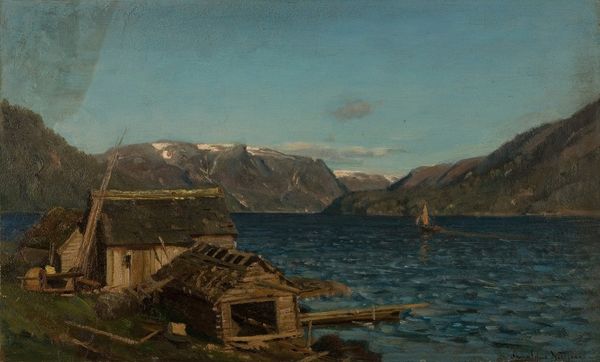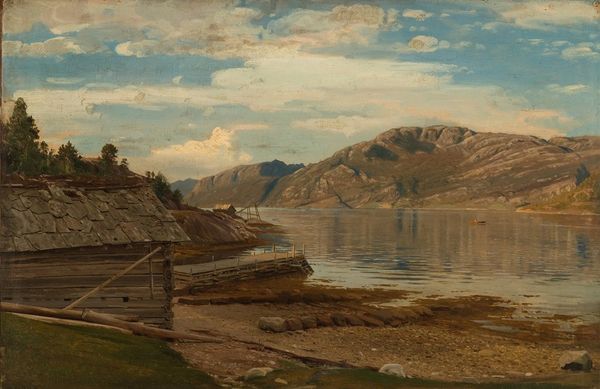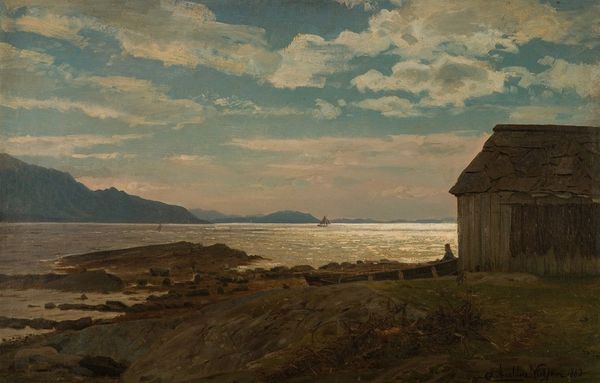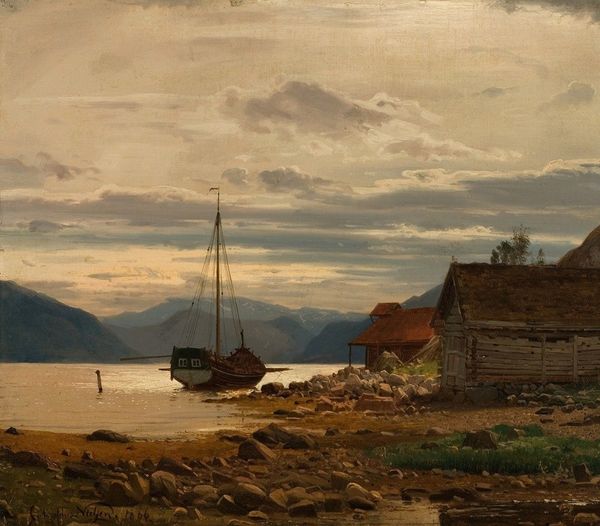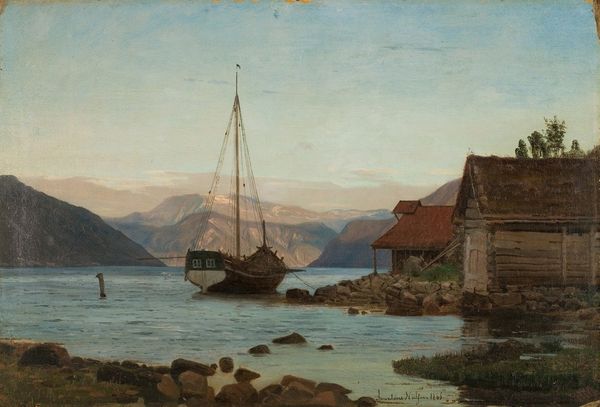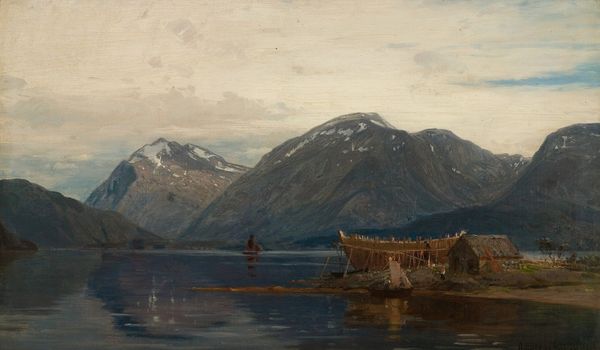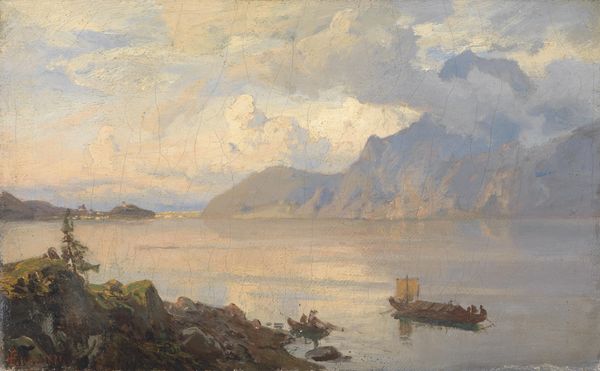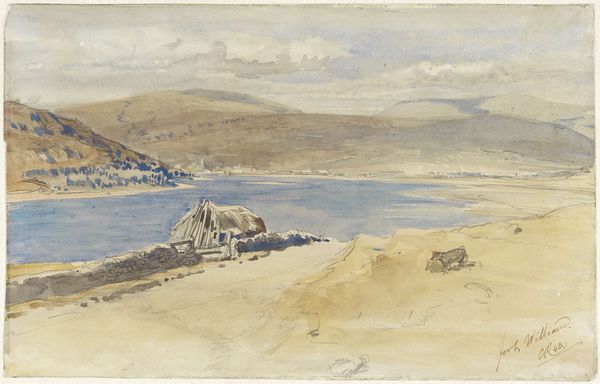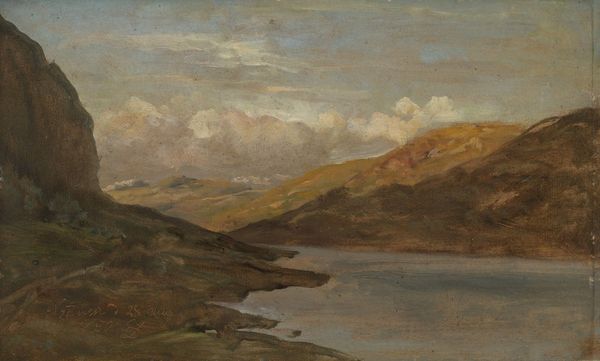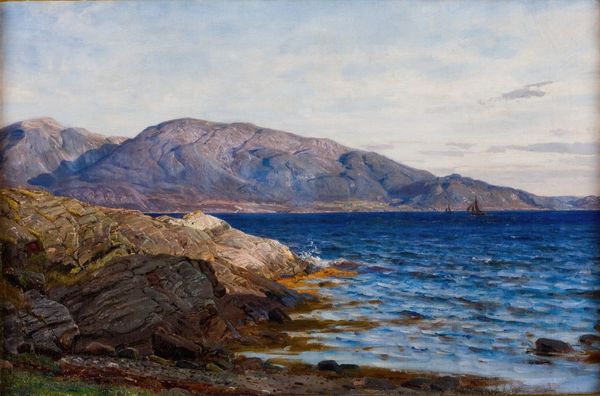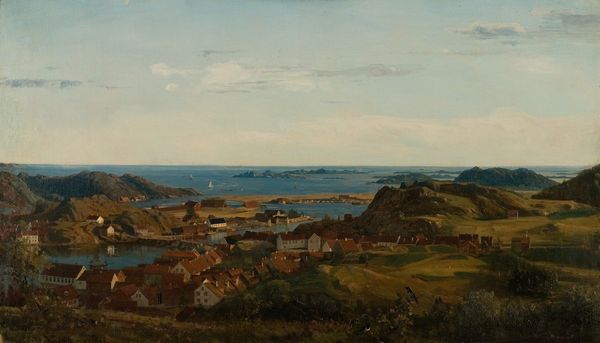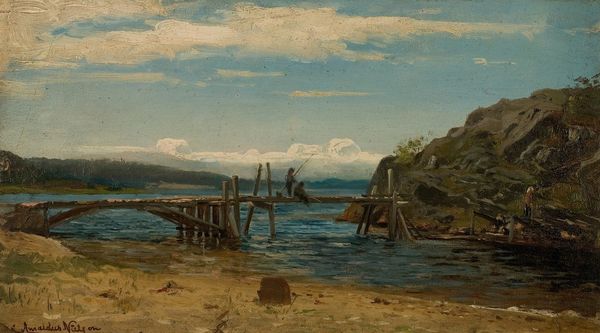
Dimensions: 80 x 60 cm
Copyright: Public domain
Curator: It possesses a rather melancholic quality, don't you think? A sense of stillness pervades the scene. Editor: Indeed. This painting is titled "Sevan," created by Panos Terlemezian in 1917. The artist uses oil on canvas to depict the Sevanavank Monastery in Armenia. We should note that this landscape also employs plein-air techniques. Curator: It's interesting how the brushstrokes seem almost hurried, capturing the fleeting light on the water. Considering the socio-political turmoil of 1917, did that perhaps influence Terlemezian’s technique? It looks like he was keen to capture it quickly before it changed or was disrupted. Editor: That’s a salient point. 1917 was a pivotal year, and the upheaval across the region, combined with Terlemezian's artistic formation in academic and impressionistic circles, would inevitably impact both the production and reception of his works. There is something to say about how his works entered the public consciousness at this time and how Armenian identity was asserted or perhaps diluted in the mix. Curator: And that monastery itself, perched so stoically overlooking the water—it's rendered using relatively heavy textures against the serene backdrop. How does this material application contribute to the painting’s message? Are we considering something timeless, despite the context? Editor: The Monastery represents historical continuity in a time of crisis. Its strategic location made it crucial historically and even today is perceived as an important spiritual and historical location within the region, something that Terlemezian may be asserting by depicting it here. Also, one could even suggest a post-impressionistic handling of the romantic ideals with his choice of medium and composition. Curator: So, by exploring both the methods and materials employed by Terlemezian, and considering the weight that rests on institutions like the Monastery in our history, a profound connection between material existence and our collective memory emerges. Editor: Precisely. We see how art provides a lens for observing both the tangible world and our intertwined cultural narrative.
Comments
No comments
Be the first to comment and join the conversation on the ultimate creative platform.
